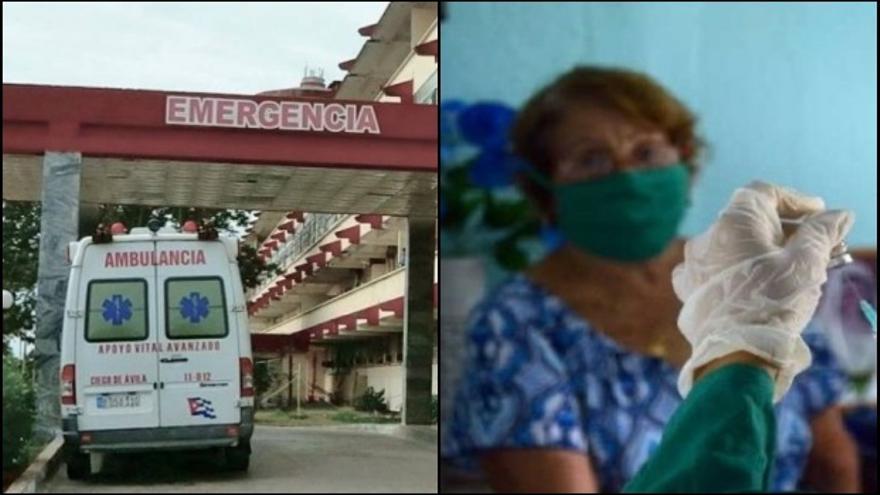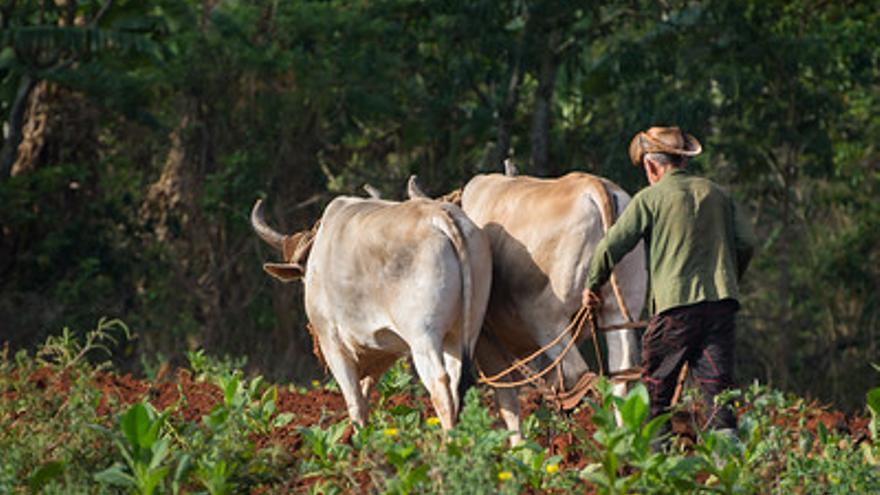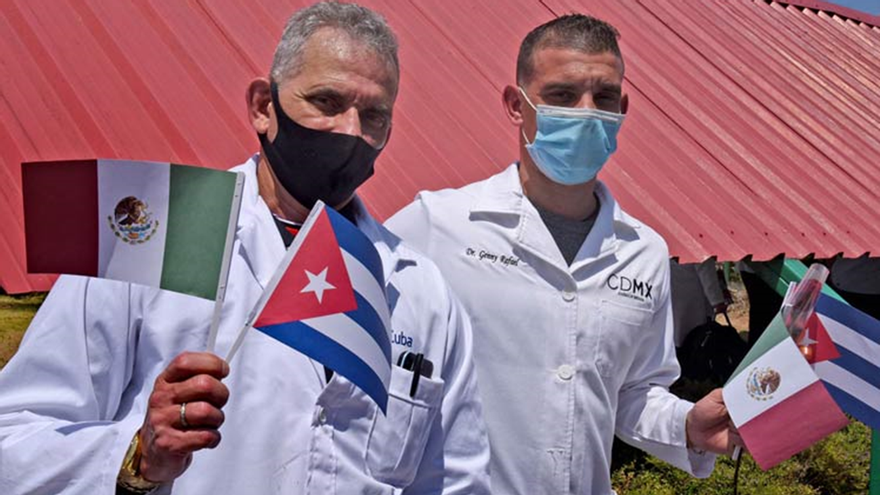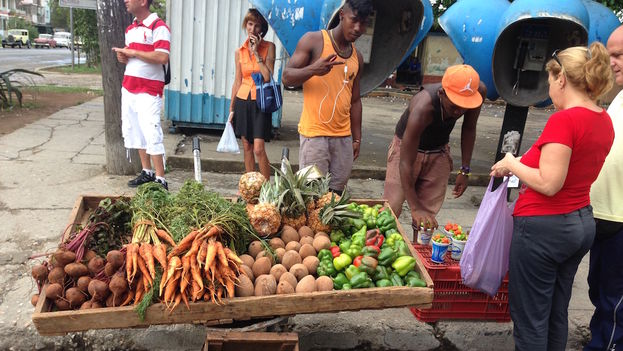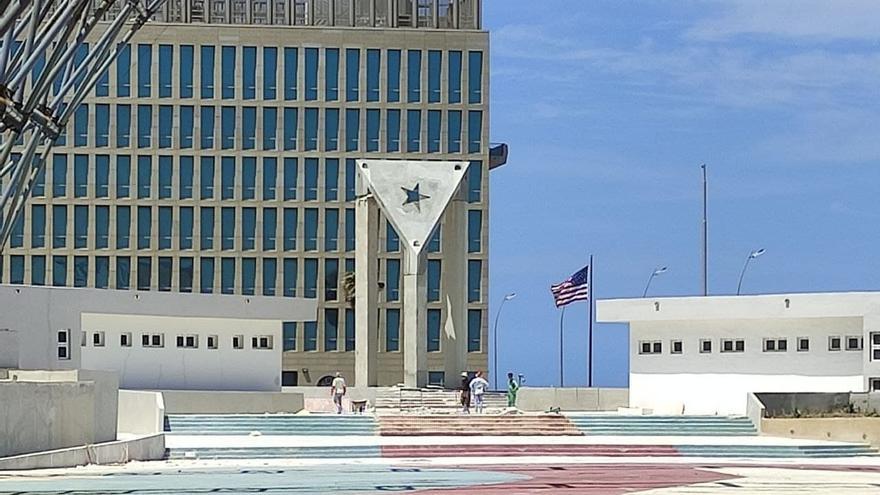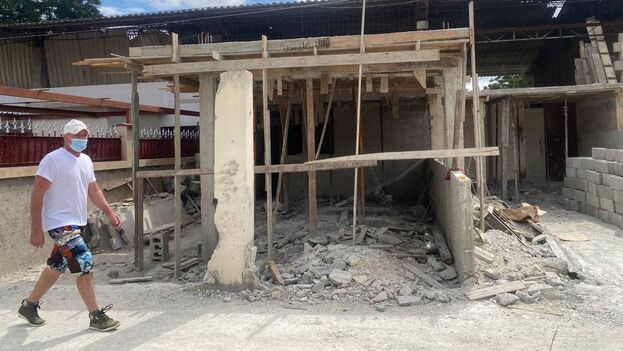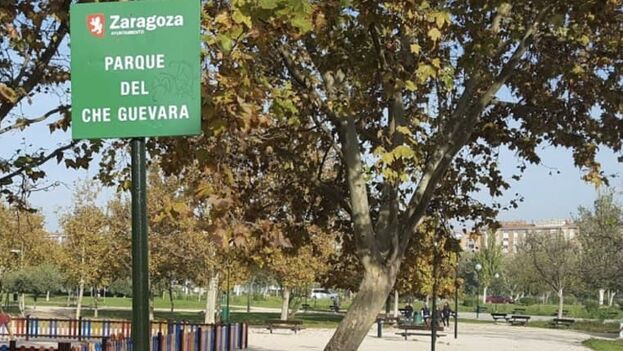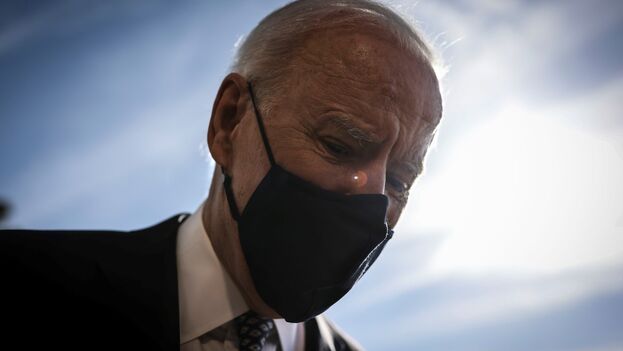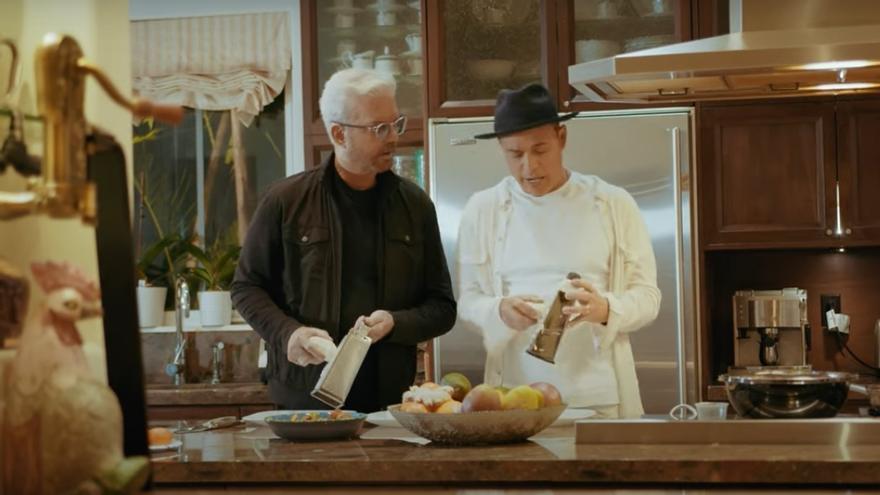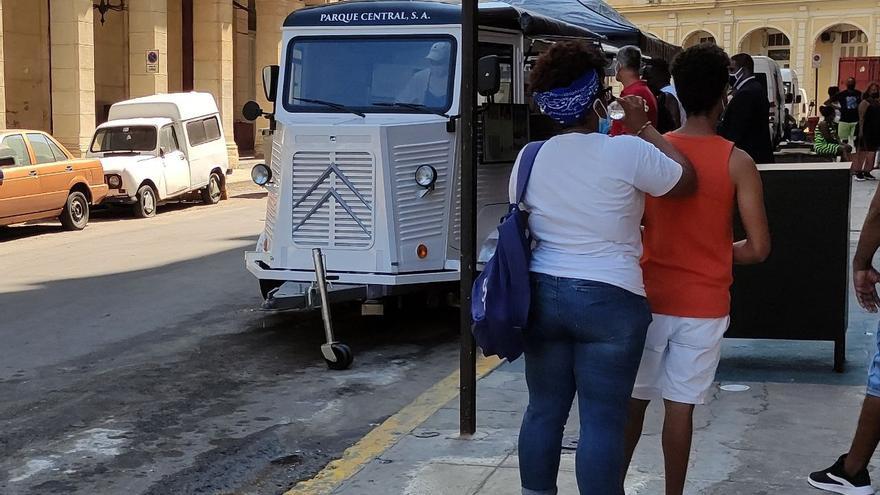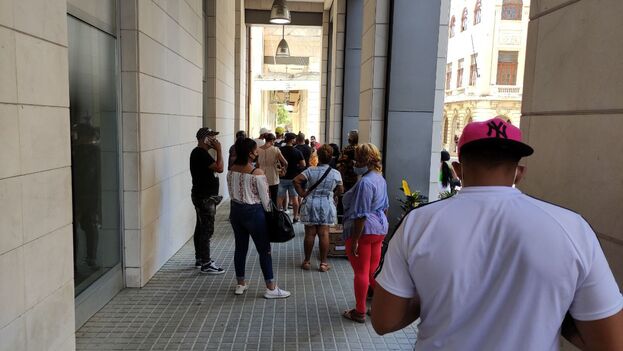The CUC was also a kind of bastard brother of the dollar that sometimes took on a name that did not belong to it. For years we continued to call the CUC a ‘dollar’, we continued to call the coins kilitos en dolar, and openly and crudely we also called them fulas [a word that means a troublesome person].
The CUC always carried with it that lack of identity, always in the shadow of the dollar and, in the end, the legitimate brother ended up imposing himself on the bastard. continue reading
The currency, issued by the Central Bank of Cuba, began to circulate in 1994, shortly after the country bottomed out with the crisis kindly called the Special Period.
The currency, issued by the Central Bank of Cuba, began to circulate in 1994, shortly after the country hit bottom with the crisis, kindly called the Special Period, which made Cubans understand the true meaning of the word hunger.
In December 1991, the Soviet Union disappeared and the following years were particularly hard for Cuba, when important economic sectors, such as industry and agriculture, collapsed.
The Cuban Government printed money to pay wages, although many workers stopped having real activities to perform. The result was galloping inflation, which reached 200% that year and evaporated the population’s consumption capacity.
Since the Cuban peso had the capability to buy less each time, those who could replaced it with the dollar, which reached exorbitant values in the informal market. A dollar reached a cost of 150 pesos, when before it had been priced at just five. Five pesos.
The Government then decided to legalize the dollar, and a few months later, in 1994, they invented a national currency that would have parity with the US currency. For every dollar that entered the Cuban economy, a CUC would be issued, and both currencies would be used in the economy that was beginning to emerge, dependent on tourism, remittances and foreign investment.
In this way, the Government tried to isolate the dead parts of the old economy, in which the peso was used, from the new, more lucrative activities, dominated by the dollar and its bastard brother, the CUC.
Both could be used in the new Hard Currency Stores, where it was possible to find everything that did not exist in the rest of the stores.
But, true to its role as a supporting actor, already in these early years the CUC was reduced in importance against the dollar.
Tourists, who began to arrive in the millions, could pay with dollars. State companies linked to tourism or foreign investment could maintain bank accounts in dollars and use them to buy items abroad.
The dollar had purchasing power and the challenge was how to get it working.
From the United States, it was easier for exiles to send foreign currency to their relatives, thanks, in part, to services by Western Union, which began operating in Cuba at the end of 1995.
Over time, remittances would become one of the most important income sources for the country.
During the 90’s, these measures brought some stability to the country, where three currencies coexisted simultaneously, although in reality it was divided between those who had dollars and the rest
During the 90’s, these measures brought some stability to the country, where three currencies coexisted simultaneously, although in reality it was divided between those who had dollars and the rest.
The CUC was born within an emergency context, but with the new century, it started positioning itself in the Island’s economy.
Dollar usage by Cuban State-owned companies had not gone unnoticed by the United States, which, in May 2004, imposed a $100 million fine on a Swiss bank for operating dollar transactions with Cuba and other sanctioned countries.
It was a warning from the George W. Bush Administration that motivated the Cuban authorities to take the next step: the dollar would take a back seat, and the CUC would be the central character.
Since 2003, the CUC had been imposed as the currency with which state companies had to operate, but in November 2004 it was decided that the dollar would stop circulating as currency for the purchase of goods and, from now on, only CUC or Cuban pesos (CUP) were to be used.
Circulation of the dollar in Cuba was not prohibited, although its use, especially cash payments, was discouraged by creating a 10% exchange tax. Dollar bank accounts continued to exist.
From then on, the reign of the CUC in the country began, and Cubans were divided between those who had convertible pesos and the rest.
With the Cuban peso you could pay in certain places, with the CUC in almost all of them. Even if the sale was not in CUC, if the seller saw that you had such a currency, his eyes would take on a shine and he would sell you the product, valuing the convertible peso, for example, at Cuban 23 pesos, when the official exchange rate was 25.
The most palpable example were the taxi drivers in Havana. Who never rode in an almendrón* (taxi), and on reaching your final destination, if payment was in CUC, the change was always in Cuban pesos and less than the amount than you actually expected?
If you dared to voice a claim, the taxi driver would seriously answer that that was the exchange rate at which he accepted CUC’s and if you did not agree, the option was to pay with Cuban pesos, which you were not carrying. Then you had no choice but to slam the door of the ’57 car (or even earlier) and leave, the driver being right or not.
There were CUC coins in 5, 10, 25 and 50 cents, equivalent to 1, 2, 5 and 10 Cuban pesos, respectively. Those coins were the well-known dollar kilitos en dolar which every Cuban child asked his father to keep. As for the bills, they circulated in 1, 3, 5, 10, 20, 50 and 100 convertible pesos, equivalent to the price that the seller considered convenient to set, with respect to the Cuban peso.
The CUC, which never went beyond Cuba’s borders and was forbidden to be taken abroad, brought us not a few joys and sorrows, like everything in life
The CUC, which never went beyond Cuba’s borders and was forbidden to be taken abroad, brought us not a few joys and sorrows, like everything in life.
If you managed to score one of those jobs where they paid you 450 Cuban pesos and 10 CUC, you were still a very poorly paid worker and, even so, you were one of the luckiest workers in your neighborhood, in your municipality, even in your province. The rest of the workers received their full salary in Cuban pesos.
The sad phenomenon of “job reorientation” also appeared around this time, according to which, if you had attended university and had an academic degree, you would earn less than the person who worked in the gastronomic sector or as the driver or chef for an embassy, who, in general, had earnings in the coveted CUC.
With the CUC, the figure of the “reseller” was also born, an illegal trade that Cubans invented to buy and sell dollars indistinctly from CUC on the black market, always at a better rate than that of the banks or the Cadeca, the State exchange houses.
In Cuba, there were stores where everything was worth one CUC: putting on fake nails cost one CUC; private English classes cost one CUC per hour; the bumper carts at Varadero amusement park cost one CUC; on Teacher’s Day, each classroom collected a CUC for the collective gift. And so, we adapted to speaking in the language of that currency.
The CUC was a kind of opium for Cubans: it had the ease to separate you, to alienate you with apparently simple numbers. For example, being told that a pair of shoes cost 20 CUC was not the same as telling you that the same pair cost 500 pesos. They got us used to low figures, thus coloring us with chaos and misery.
Tourists came to the country and did not understand the reason for so many currencies and so many exchange rates for each one of them. How to explain this whole complex system to foreign visitors, if we barely understood it ourselves?
An ordinary citizen who received a CUC or a dollar as a remittance could exchange it for 24 or 25 pesos. On the other hand, for a worker in the Mariel Special Development Zone, each CUC earned, in theory, was converted into 10 pesos. While for State companies’ accounting purposes, the dollar, the CUC and the peso were comparable.
The result of this was a country in which there was an incentive to import everything, sell it in CUC and continue importing. Exporting or producing for the local market was impossible. And the problem of wages in the State sector did not seem to have a solution. With salaries that became 20 or 30 CUC, you could hardly buy those same imported products.
The panorama was shaping the new economy, which little by little stopped producing food or industrial products that the domestic market needed.
These could always be imported as long as tourism continued to flow, while Cubans continued to emigrate to the country where they could earn dollars, and while Venezuela and other countries continued to contract for medical services.
That the CUC was destined to die began to be sensed in 2011, when the Congress of the Communist Party approved the so-called Guidelines, which ruled that the country should “conclude” the monetary and exchange unification.
That the CUC was destined to die began to be sensed in 2011, when the Congress of the Communist Party approved the so-called Guidelines, which ruled that the country should “conclude” the monetary and exchange unification.
By then it was becoming clear that multiple exchange rates were a problem and the parity between the CUC and the dollar was no longer real. For years, new CUC bills had been printed without being backed in dollars.
State companies could no longer convert them into dollars, but relied on documents called Liquidity Certificates issued by the Government, which defined which CUCs were equivalent to dollars and which were not.
But in Cuba, these types of changes, if they happen, usually happen slowly. In fact, it took almost ten years, the collapse of the Venezuelan economy and the arrival of a global pandemic that ended tourism (at least temporarily), for the unification to be “complete.”
The last decade would be that of the decline of the CUC. Like a patient diagnosed with a terminal illness, the CUC lived on, knowing that its days were numbered.
In 2014, the government announced that it had created a plan to unify the two national currencies, something that would happen on what was called Day Zero. That would be the CUC’s death date and the birth of the Cuban peso as the only currency in circulation.
From then on, the supposed and imminent arrival of Day Zero became a recurring rumor that hung over the life of the CUC.
In 2016, the official media published articles stating that the decision could not be postponed.
In 2017, Raúl Castro, First Secretary of the Communist Party of Cuba and then President of the country, said that the solution to the problem “cannot be delayed any longer”.
But it was not only delayed, but in October 2019, the authorities once again turned to selling products in dollars. History, as they say, is cyclical. The country again had three currencies: Cuban peso, CUC, and the US dollar.
It became clear, then, that even if the CUC were eliminated on Day Zero, there would still be more than one currency in the country.
Initially, only domestic appliances, vehicle parts and other products that were defined as “high-end” were traded in foreign currency. Then, in July of 2020, stores opened, selling all kinds of food and basic necessities.
These stores, called freely convertible currency (MLC) stores, only accept payments with magnetic cards linked to a bank account with dollars or euros. To attract the dollars to these stores, the authorities decided to withdraw the 10% tax that had weighed on the US currency.
Once the stores in MLC were opened, the stores in CUC were completely relegated, with shelves increasingly empty and their offers – already scarce – even more impoverished.
By losing its usefulness in buying basic goods, the health of the CUC entered a terminal phase. Cubans no longer knew what to do with their accounts, savings or holdings in CUC.
Many businesses no longer accepted CUCs or returned the change in pesos. As the dollar re-installed, the CUC lost value every day. At the end of 2020, the currency that one day had parity with the dollar was exchanged on the black market for half a dollar.
On December 10, 2020, it was announced that Day Zero would finally happen on January 1, 2021
On December 10, 2020, it was announced that Day Zero would finally be January 1, 2021.
The death of the CUC was announced by President Miguel Díaz-Canel, with Raúl Castro at his side, when he stated that what they had been cooking for years was finally starting to take off: monetary reunification or the ‘Ordering Task’, as the process has also been called lately.
For the general population, including for the self-employed, now the peso will coexist with the MLC. Income earnings will be received in the first currency, although many of the things they will need to buy will be sold in the second, as was the case in 1993.
For most State-owned companies, only the peso will exist. And they will only be able to access dollars at the same exchange rate that applies to citizens: 24 pesos for every dollar.
This will spell ruin for many of those companies, which will either disappear or will have to be rescued, authorities have said. This will also produce inflation, which according to some estimates will be between 470% and 900%, worse than was recorded in 1993, the hardest year of the Special Period.
The CUC will be relegated to the memories of Cubans, to the memories of the last 30 years, which are the memories of scarcities and of shortages. Nevertheless, nobody will miss the CUC, which died young. Experts and those who know have stated, however, that it should have died even younger.
*Translator’s note: Almendron is the name given to what is usually a classic American car in use as a taxi, often operating in fixed route service. The name comes from the “almond” shape of old vehicles.
________________________________
Editor’s Note: This work was supported and edited by the Institute for War and Peace Reporting (IWPR), an independent not-for-profit organization working with the media and civil society to promote a positive change in conflict zones, closed societies and countries in transition all over the world.
___________
COLLABORATE WITH OUR WORK: The 14ymedio team is committed to practicing serious journalism that reflects Cuba’s reality in all its depth. Thank you for joining us on this long journey. We invite you to continue supporting us by becoming a member of 14ymedio now. Together we can continue transforming journalism in Cuba.
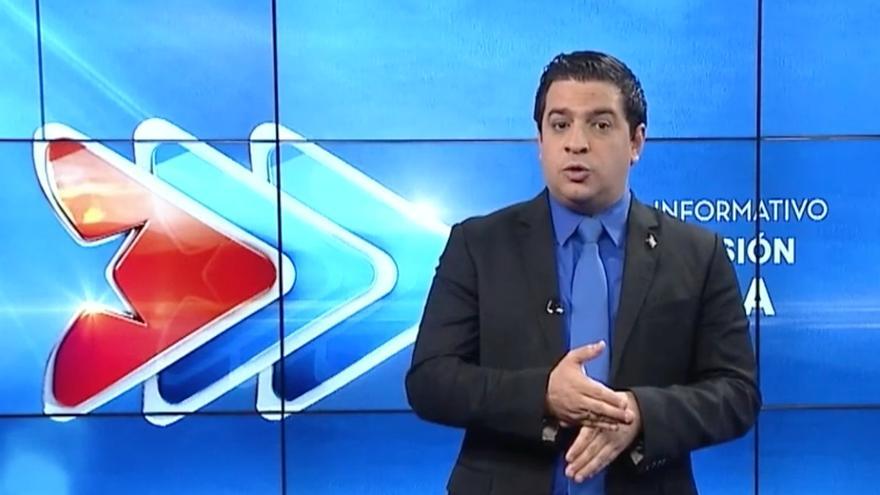
![]() 14ymedio, Havana, 30 March 2021 — The Cuban National Television presenter, Humberto López, again dedicated a video in his space this Monday in which he threatens to apply “the most severe sanctions” to the 27N [27 November] collective, the San Isidro Movement and, by extension, to all the nonconformists with the Government and the Constitution.
14ymedio, Havana, 30 March 2021 — The Cuban National Television presenter, Humberto López, again dedicated a video in his space this Monday in which he threatens to apply “the most severe sanctions” to the 27N [27 November] collective, the San Isidro Movement and, by extension, to all the nonconformists with the Government and the Constitution.
